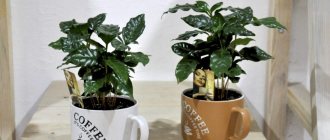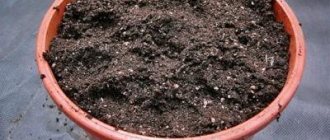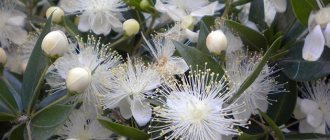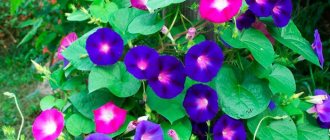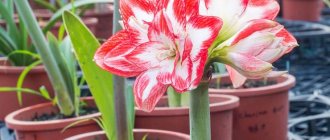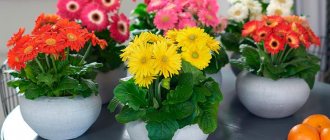People living in megacities do not have enough time to get out into nature. Concrete walls mercilessly steal your energy. Therefore, people living in the urban jungle grow indoor trees at home to get closer to nature.
Plants not only harmonize the environment, but also bring good luck, prosperity and wealth to the house.
Types of indoor trees and breeding conditions
Large plants in bathtubs make excellent interior decorations. With proper watering, you can enjoy their lush greenery all year round. In general, species with low maintenance requirements are preferred. We will talk in more detail about which varieties can be grown at home.
Devoting your free time to hobbies and entertainment is a luxury you don’t have time for. Unpretentious varieties that do not require special conditions for growth and flowering are popular among apartment and house owners. The following varieties are popular:
- ficus (Benjamina, Bengal, eucalyptus);
- palm trees (date palm, banana palm, rapeseed palm);
- exotics (jackfruit, bamboo, chevron);
- bonsai (pine, spruce, sakura)
- citrus trees (lemon, tangerine, orange, kumquat)
- Flowering plants (hibiscus, abutilon).
Owners decide for themselves which type they prefer. The choice must be made taking into account many nuances. Decide in advance where the pot will be placed. For the plant to be healthy, there must be enough light in the house. Be careful when choosing colors if there are small children or pets in the house. Some of the plants contain substances that are harmful to health.
Yucca filamentosa
Yucca shrub (Yucca filamentosa), with its bright (and sharp!) muted yellow, sword-like leaves, puts up tall flower spikes topped with showy clusters of white flowers in late spring and early summer.
This low-maintenance shrub tolerates heat and moderate drought. It will add texture and interest to any patio . It needs a sunny location and well-drained soil and is suitable for temperate climates. The shrub reaches one meter in height at maturity and the flower spikes can reach 2 meters in height.
Follow us on Pinterest for more interesting articles.
Useful short videos from Make-Self.net
Ficus
There are more than 20 species of domestic trees in the Ficus genus. They vary in shape and appearance. This undemanding plant does not require frequent watering and does not need nutrients. It purifies the air well, neutralizing benzene-formaldehyde and other pollutants. Some ficus plants are poisonous. They should not be kept in a home where there are children or pets.
Ficus succinatus produces volatile substances that are deadly to asthmatics. Not recommended for bedrooms and children's rooms.
Ficus succinatus looks great in an interior with large, lush green trees that form a dense crown. The following varieties of ficus are suitable for home interiors:
- Ficus binnendica;
- lyre-shaped;
- ampelik;
- Bengal;
- rubber bearing;
- in the shape of a bottle.
- Ficus benjamina;
- dwarf;
Ficus is one of the most popular indoor plants. It can often be found in apartments and offices. To keep the plant looking healthy, it is enough to water it generously from time to time.
How often should you water?
It all depends on the type of indoor plant, temperature and humidity in the room. For example, ficus and citrus trees, as well as bonsai trees, are considered moisture-loving. It is advisable to keep all these plant varieties in tubs with gravel that retains moisture well . In addition, intensive watering is recommended for coffee trees. But palm trees, on the contrary, can be watered only once a week.
For irrigation, it is recommended to use rain, melt or distilled water. If you prefer tap water, it must be allowed to stand before watering.
Also keep in mind that water enriched with minerals can be destructive for some types of indoor trees and shrubs, especially exotic ones.
Dieffenbachia
Reaches a height of up to two meters. Mosaic from the sunny tropics is demanding to maintain. Does not tolerate drafts and cold. Irregular watering will cause yellowing of the leaves. Spraying with warm water is necessary to maintain the lush green color of the leaves.
Dieffenbachia can liven up a boring, flat interior. However, not everyone knows that the juice of this plant is poisonous. Causes irritation upon contact with human skin. If the juice gets into the eyes, it can cause vision problems. Dieffenbachia should not be grown in a family with small children and animals.
Boxwood
This evergreen beauty reaches a height of up to 12 meters. It can also be grown indoors. Dense greenery forms a dense crown and creates an oriental pattern. Don't forget that this is a long-lasting boxwood. With proper care, it will delight its owners for many years.
After planting, the seedling grows slowly, up to 5 cm per year. Around the columnar trunk there are many shoots covered with small glossy leaves.
There are more than 50 varieties of boxwood. The following varieties are best suited for growing at home:
- Small leaves;
- Evergreen;
- Balearic.
Evergreens should be pruned in a circle. Boxwood branches grow quickly. Regular pruning gives the plant a neat appearance. Compact boxwood will be a wonderful decoration for your apartment or office. Decorative beauty is an excellent air purifier. Please note that the stems and leaves of this plant are poisonous. It is not recommended to place it in a children's room. Greens are also dangerous for pets.
Flowering home shrubs: plant names and photos
Growing flowering domestic shrubs is necessary with the correct selection of crops. Not all of them are suitable for protected ground. The most suitable ones have been selected and presented further on the page.
See photos and names of domestic shrubs that produce active flowering in an apartment, office or home:
Hypocyrta - Hypocyrta glabra
Houseplants of hypocyrthus are shrubs with leathery leaves, which indicate that the culture thrives in a dry atmosphere better than most of its tropical relatives.
Look at these home shrubs in the photo, which shows different periods of plant growth:
It can be bought in flower shops from late summer until next spring in bloom. A good hanging plant.
Family: Gesnenaceae (Gesneriaceae).
Homeland: Brazil.
Location: Very bright, but without direct sunlight. In the summer you can hang it on a tree with sparse foliage.
Temperature: Loves warmth all year round, but from December to February the plant should be kept at 12-15 ° C, which promotes the formation of buds.
Substrate: Flower soil mixture.
Watering: From spring to autumn, lightly moisten the soil; in winter, hardly water. Does not tolerate waterlogging.
Fertilizing: From March to August, apply fertilizer in small doses every 2 weeks.
Transplant: In spring.
Pruning: After flowering, lightly prune: this promotes the growth of new shoots and tillering.
Reproduction: In summer by division and apical cuttings at a soil temperature of 20 ° C.
Pests, diseases: Aphids.
Jacobinia - Jacobinia pauciflora
Of the 50 different species of Jacobinia, Jacobinia pauciflora is the most popular as a houseplant. An evergreen bushy shrub ideal for a cool-temperature conservatory. Jacobinia reaches a height of 30-60 cm and is decorated with numerous flowers, red at the base and orange at the ends. Jacobinia carnea (meat-red Jacobinia) is a greenhouse plant.
Family: Acanthaceae (Acanthaceae).
Homeland: Brazil. Location: Light and sunny all year round, best outdoors in summer.
Temperature: In winter about 15 °C.
Substrate: Flower soil mixture.
Watering: Moisten the soil moderately. In winter, water less.
Feeding: From March to August, feed once every 14 days.
Transplantation: In spring after flowering.
Pruning: When replanting, cut the shoots by half.
Reproduction: In spring, by green, non-lignified cuttings at a soil temperature of 20-22 °C. Pinch 2-3 times.
Pests, diseases: Spider mites, aphids. Curling of leaf tips, falling leaves.
Important! The root ball should not be allowed to dry out.
Medinilla - Medinilla magnifica
This tropical shrub has elegantly hanging 40 cm flower stalks with panicle inflorescences and large dark green leaves. It is considered one of the most luxurious ornamental flowering plants.
Family: Melastomataceae (Melastomaceae). Homeland Luzon Island - Philippines.
Location: Bright, without direct sunlight.
Temperature: Above 20 °C. A good plant for greenhouses. In winter, place in a cooler place (16 °C) for 2 months, which promotes the development of flower buds.
Humidity: High. Spray more often and take care of indirect air humidification.
Substrate: Flower soil mixture with the addition of polystyrene chips.
Watering: Water sparingly in winter. When buds appear, increase watering and raise air temperature. Water with soft water.
Feeding: From March to August once a week.
Transplantation: If necessary - in the spring.
Reproduction: In spring by apical cuttings at soil temperature 25-30 °C. Difficult to reproduce.
Pests, diseases: Growth disorders.
After buds form, do not move the plant.
Pentas - Pentas lanceolate
In indoor culture, the subshrub, 30 to 60 cm high, erect or creeping, blooms with apical inflorescences of white, salmon, pink and bright red colors. The leaves are ovate to oblong elliptical in shape, pubescent.
Family: Rubiacea (Madaceae).
Homeland: Tropical Africa.
Location: Lots of light all year round, but not direct sunlight.
Temperature: In summer - warm and plenty of air, including outside; in winter it is cool from 12 to 15 °C.
Substrate: Flower soil mixture.
Watering: Moderate, soft water. After flowering, keep it somewhat drier until new shoots form.
Feeding: Every 14 days in small doses.
Transplant: In spring.
Reproduction: In spring by apical cuttings at soil temperatures from 20 to 25 ° C.
Pests, diseases: Yellowing of leaves.
Important! Avoid stagnant waterlogging! Pentas is treated with growth-inhibiting substances, which maintains its compactness only for a limited time. Therefore, the plant needs to be pruned more often before flower buds appear.
Laurel
Laurel can grow in an apartment even in the absence of light; it is not afraid of drought and drafts. It is easy to care for. With moderate watering throughout the year, it produces a beautiful green color. The aromatic leaves can be used as a seasoning in cooking.
Country laurel is not afraid of diseases and pests. At home, the giant can reach a height of up to 15 meters. Pruning will help reduce its growth. At home, laurel lives 12-15 years. If the shrub wants to form a lush crown, pruning should be carried out from the fifth year. There are the following varieties of decorative laurel:
- Noble;
- Canary.
Noble laurel has a pleasant, tart aroma. Canary laurel has beautiful, broad leaves. Botanical varieties look great in urban interiors.
Hovea
The perennial plant Hovea belongs to the palm family. Under artificial conditions, the trunk, covered with ring-shaped scars, grows to the ceiling. Feather-like leaves form a shady crown. Hovea becomes stunted due to lack of light. Keep it in a large room, near south-facing windows. Water sparingly in winter and deeply in summer.
The palm tree does not tolerate dry air. Lack of moisture causes yellowing of the leaves. Spray the greens with water at room temperature from time to time. It is important not to let the soil in the pot dry out. To prevent this, in case of prolonged absence, it is necessary to install an automatic watering system.
This perennial palm reaches gigantic proportions, spreading its feather-like leaves widely. It should be planted in a spacious room. Green beauty cleans the air well. Its leaves are harmless to animals and small children. Hovea can be placed in a spacious children's room.
Citrus is a houseplant in the form of a shrub
Citrus
Decorative edible fruits, white fragrant flowers, evergreen leathery, shiny leaves have made citrus fruits a favorite indoor and greenhouse plant. Citrus flowers and fruits appear every year, often at the same time. The fruits do not fall for weeks, sometimes months.
Family: Rutaceae (Rutaceae).
Homeland: Southeast Asia.
The location for this shrub-like houseplant is bright, indirect light or full sun all year round.
Temperature: In summer, it is best to place the plant outdoors in a warm, sheltered place. In winter 15-18 °C.
Air humidity: Spray more often.
Substrate: Flower soil mixture.
Watering: From spring to autumn, water abundantly, and little by little in winter. Soften the water.
Feeding: From March to August weekly in small doses.
Transplantation: When filling the entire earthen coma with roots.
Pruning: Trim as little as possible if possible.
Reproduction: With difficulty. Cuttings in a warm greenhouse.
Pests, diseases: Pseudoscale insects, cushion insects, spider mites, yellowing of leaves (chlorosis).
Important! Do not allow the earthen ball to dry out or become waterlogged.
Dracaena
The tropical dracaena is called the dragon tree: "Dracaena" means dragon in Latin. When the plant grows, it looks like a palm tree. The leafless stem ends in a tuft of long leaves that bend downwards. Dracaena belongs to the asparagus family. There are up to 40 species in the wild. The following varieties are common in home floriculture:
- dereum;
- Sandera;
- tassels;
- rosefa;
- aromatic;
- inclined.
Dracaena is very popular among gardeners. With proper care, he can live in a home for 12-15 years. It is easy to care for. The newly acquired dracaena needs to be transplanted from a cramped pot. Replanting should be repeated as the root system grows.
Dracaena loves diffused sunlight, like in the tropics. It should be placed near a south-facing window, shaded with light curtains. The southern beauty does not tolerate cold and drafts. In an unfavorable environment, the leaves will begin to turn yellow and fall off.
Crassula
The stem tree is common in home floriculture. Its name comes from the fact that its leaves resemble coins. The leaves have a round shape due to their ability to accumulate moisture and nutrients. This indoor succulent reaches a height of up to 2 meters. Thistle propagates by cuttings.
The plant should be replanted every two years. A weak root system cannot support the weight of an adult plant. For replanting, a deep pot with thick walls is suitable, which will not allow the thistle to collapse.
The tree needs regular watering: the water should be moderate and warm. Thistle is a shade-tolerant plant. It changes shape when there is a lack of light. Its stems lengthen and become thin. Direct sunlight is undesirable for it. This causes the greens to wither and begin to fall off.
Variety of indoor bushes
Bushy houseplants come from different families and have numerous subspecies. They can be vertical or creeping, have emerald or multi-colored leaves (smooth or pubescent, leathery or glossy), a branched root system, and are usually propagated using cuttings. They are decorative, cultivated at home or in greenhouses, and used to decorate flower arrangements. There are climbing and hanging representatives of the flora. They need constant pruning, fertilizing and regular watering.
Like indoor trees, shrubs help change the atmosphere in the house, so it is not necessary to rearrange the furniture for this, and the owners can enjoy bright flowers or juicy berries and decorative leaves all year round.
Let's look at several different representatives:
- Hamedorea is a bushy plant of small height, belonging to the Palm family. Its second name is bamboo palm. It has beautiful emerald green leaves. Often used to decorate rooms in offices and homes due to its thick, bright and attractive greenery, it cleans the air and removes harmful substances from it;
- Gardenia is a compact, evergreen, ornamental shrub with a height of 50 cm to a meter. It has glossy dark green foliage and creamy double flowers with a great scent. Under favorable growing conditions (acidic soil), a vegetative mass begins to form, and the buds bloom one after another throughout the year with a short break.
This oriental beauty is quite capricious. The consequences of alkalization lead to the loss of the root system's ability to absorb nutrients and water. It is advisable not to buy adult shrub flowers that are grown in greenhouses. They have a hard time getting used to room conditions, they can get sick and die. It is better to take young representatives of the flora from rooted cuttings, or to root the cuttings yourself. Plants grown from cuttings are unpretentious and love warmth, light and moisture;
- Rosemary - belongs to the evergreen, ornamental shrubs of the Lamiaceae or Lamiaceae family, 50-70 cm high. The plant has a gray-brown bark. Young branches are tetrahedral, white-pubescent, with a medium, strongly prominent vein. The indoor flowering shrub has small gray-green lanceolate leaves.
When flowering, small flowers are formed, arranged in racemose inflorescences with pale violet-blue or soft blue flowers. The fruit is an ovoid, brown nut that is located at the bottom of the calyx. Rosemary officinalis is best suited for the home - it is unusual in color and smell. If you rub it between your fingers, the smell of lemon will appear.
- Oleander is an evergreen bush flower, ideal for growing at home. It has highly branched shoots with brown-green bark. The leaves have a smooth surface and resemble willow. In the summer, large bright flowers appear, which persist until the second half of autumn. It is advisable to place the plant in the brightest place in the room.
There are many contradictions and superstitions surrounding oleander. It is considered very poisonous, but at the same time it cleanses the air space, attracting all toxins. There is also a belief that the bush helps maintain family and financial well-being, and get rid of smoking, alcoholism and the blues.
- Dracaena is an exotic shrub that attracts with its appearance. After some time of cultivation, its “rosette” of leaves with straight stems forms into a trunk. The height of the plant can reach 3 m depending on the species. The leaves themselves are elongated, with a juicy green tint. Under the right conditions, dracaena grows for up to 15 years and does not cause trouble due to its unpretentiousness. Read about the conditions for keeping dracaena here.
It is necessary to place the bush in a bright place, but it must be protected from direct rays of the sun. Regular abundant watering is also required, before which the soil is loosened. To learn how to care for such a “green pet,” watch the video at the end of the article.
- Pandanus is a large indoor plant with stunningly beautiful long leaves. It will be able to compete with popular palm trees and ficus trees. The shrub is absolutely unpretentious and can grow even with irregular watering in the most ordinary soil.
Pandanus grows without problems in rooms with poor lighting, away from windows. The leaves are not demanding on humidity; you just need to periodically remove a layer of dust from them. This reliable and easy-to-maintain bush is an ideal option for landscaping large spaces.
- Arrowroot is a perennial herbaceous plant with tuberous roots and straight shoots. Small white flowers are collected in inflorescences. Arrowroot loves shade and humid air (about 90%), so it needs to be watered often and avoid exposure to sunlight, because in the bright sun the leaves turn pale and decrease in size.
- Clerodendrum is a perennial spreading shrub that is gaining popularity in home floriculture. It blooms very beautifully and smells nice. After pollination, small orange fruits begin to appear. The plant requires bright diffused light for a long time (12-14 hours a day), shading is necessary at noon.
You also need to maintain a high humidity regime and periodically spray or wipe the leaves with a damp cloth. Watering must be done moderately but regularly.
As you can see, indoor bushes are extremely diverse, and choosing a “green pet” that is pleasing to the eye will not be difficult. It is only important to study the conditions of its detention. Then your favorite bush will become an integral part of your home and will be able to create harmony and comfort in it.
Abutilone
This plant of the mallow family reaches a height of 1.5 meters at home. The thick trunk is topped with a flowering crown. It is covered with curly leaves reminiscent of maple leaves. Due to the shape of its leaves, Abutilon is called the world maple.
Abutilone tropical loves warmth, moisture and low light. With good care, indoor maple grows and branches quickly. In spring, its branches are covered with bright flowers - bell-shaped flowers in pink, purple, red or gold. Flowering continues until late autumn. There are more than 100 varieties of Halla maple. The following types are common in home floriculture:
- Bellevue;
- Organza;
- Bella mix;
- Juliet;
- Sello;
- Eye of the Tiger.
- Bella;
The above varieties are distinguished by beautiful flowering. Every spring the green crown is showered with lush flowers. The abutilon flower is extremely beautiful. The calyx of a large flower is crowned with bright petals covered with delicate reddish veins (visible in the photo). During the flowering period, abutilon needs abundant watering and weekly feeding.
Hibiscus
The Chinese rose thrives in apartments and offices. With proper care, it can reach a height of 1.5-2 meters. Chinese hibiscus is a long-lived plant. In favorable conditions it lives for several decades. Large green branches forming the crown are its decoration. With proper care, the Chinese rose will repay its owner with beautiful flowers. Hibiscus flowers are variegated and have large petals. The Chinese rose is easy to care for. Regular watering and sprinkling are sufficient for proper growth. Hibiscus can grow under artificial light, in rooms completely devoid of natural light.
A coffee tree
Coffee trees grow in the hot tropical climate of Africa. The coffee tree loves warmth and moisture. In order for the plant to grow well, it is important to place it in a warm, well-lit place. The room must maintain a stable temperature of at least 18 degrees. Do not place the seedling on the windowsill in winter: a lump of earth in the pot may freeze and the seedling will die.
If the seedling is well cared for, regularly watered and sprayed, then in favorable conditions it will grow up to 1.5 meters. The stem thickens to form a trunk, which will be topped by a spreading crown covered with wavy greenery. Flowering occurs twice a year: in spring and autumn. Small white flowers exuding a delicate aroma turn into green coffee beans.
Growing dwarf cherry trees at home
Today, cherries grown on a windowsill are no longer a surprise and many treat them as a common occurrence. Growing a cherry tree is not difficult. For this purpose, the evergreen Barbados cherry is used. This type of taste is practically no different from ordinary cherries.
For planting, use cherry pits that have been washed and kept for 10 hours in Kornevin. The pot with the soil mixture must have drainage holes. The substrate is used purchased for indoor flowers or prepared independently: mix 7 parts of humus, 2 parts of turf, 1 part of mullein. For 10 kg of substrate add 10 g of ammonium nitrate, 10 g of potassium sulfate, 12 g of superphosphate, 12 g of fluff lime.
Pour warm water over the mixture and place the seeds. The top is covered with glass to create a greenhouse effect. A sunny and warm place is chosen, and shoots are expected to emerge in a month.
The advantage of the dwarf cherry is its unpretentiousness. The plant grows well and bears fruit both in bright sun and in the shade. In summer, a tree needs a temperature of 18-22°C, in winter – 15°C.
Water only with warm water. In summer - 3 times a week, and in winter - 1 time. Transplantation is performed once every 3 years.
Feeding is carried out 2 times a month. They do this from February to October. Liquid humic fertilizer is used as a fertilizer. Fertilize strictly according to the instructions. In winter, fertilize cherries once every 1.5 months.
Monstera
The evergreen monstera was brought here from South America. When young, the plant looks like a bush, covered with large leathery leaves, which over time become covered with slits and holes. Many people believe that monstera does not bloom. This is wrong. This tropical beauty rarely blooms. The monstera flower is a dense white bud with a variegated, corncob-like fruit inside.
Monstera is easy to care for. It requires regular watering and sprinkling. As a shade-loving plant, it does not tolerate direct sunlight, so it should be kept away from south-facing windows. Also keep in mind that monsters don't like to be moved from place to place.
Lagerstroemia indica
Although Lagerstroemia x Natchez can be pruned down to a single trunk and made to look like a small tree, it is actually a bush that produces showy flowers ranging from soft pink to deep purple and stunning red, depending on the variety .
In temperate climate zones, it can be left outdoors for the winter, which is preferable to moving it indoors. Lagerstroemia are some of the most showy shrubs and will add a welcome splash of color to a patio or deck, blooming from summer to mid-autumn.
Bonsai
It is a miniature copy of a tree. The idea of growing gnomes in pots came to us from China. Asian bonsai is not just a small flower in a pot. This is a work of art and the embodiment of living sculpture. Growing miniature trees is a kind of ritual to create a smaller copy of nature.
Growing bonsai requires a lot of skill and patience. Coniferous, fruit trees and specimens with small, fluffy leaves are suitable for cultivation. Beautiful bonsai trees are made from climbing willows and birches. The rooted seedling is planted in a pot. Grass is sown around it for aesthetics. For several years, the spruce or birch tree will be well looked after, giving it the desired shape. This is achieved by pruning old branches and cutting off new shoots. In this case, the bonsai should be watered at the right time and fed as needed. By observing the shoots and regulating their growth, you will eventually end up with a graceful mini dwarf tree.
Citrus trees
Grown at home in large boxes and pots. According to Feng Shui, they bring good luck and prosperity to the home. Citrus trees can be propagated by seeds and cuttings. They are easy to care for. Regular watering, sprinkling and fertilizing once a year is sufficient. Lemon and orange seedlings need pruning. There are several varieties suitable for growing at home. The most popular of them are the following:
- tangerine tree;
- calamondin;
- grapefruit;
- lemon;
- citron.
In order for exotic citrus fruits to bear fruit successfully, it is necessary to create ideal conditions: optimal temperature, constant humidity, regular fertilization of the fruit tree and light during the winter months. Grafting is necessary for successful fruiting.
Growing homemade pineapple is easy
Of course, a home-grown pineapple can hardly be called a tree. But even growing an exotic crop as a houseplant will bring satisfaction. Pineapple is amazing during flowering, and with good care, after 5 years you can taste its fruits.
To grow a pineapple at home, cut off the top. It is placed in a pre-collected soil mixture of peat and sand (the components must be taken in equal proportions).
To maintain moisture inside the container, cover it on top with a glass jar or plastic wrap. When the top takes root and the bush grows a little, the plant is transplanted into a shallow, wide container. For replanting, use the following soil mixture: sand, turf soil and leaf compost are mixed in equal proportions.
It is important for the seedling to have plenty of space. If you take into account this requirement of the pineapple and select the appropriate pot for each transplant, then in the future you can get fruits.
The culture is afraid of cold weather. The coldest temperature in the room where pineapple is grown can be +18°C. The optimal temperature is considered to be 23-25°C.
The plant needs good lighting, so in winter you will need to provide the pineapple with additional light (usually a fluorescent lamp is used).
For plant development, additional fertilizing is needed. Gardeners advise fertilizing pineapple with organic fertilizers once a month. Mullein solution has proven itself well (its preparation is described in the section on growing dwarf pomegranate). During active periods, when the pineapple is growing and developing, mineral fertilizers, for example, “Flower” or “Rainbow” are used twice a month. Be sure to strictly follow the rules specified in the instructions.
Water an adult bush once a week with settled, warm water.
The ideal option is melt or rain water. Often, to water the pineapple, take boiled water and add a pinch of citric acid.
Pineapple should be periodically sprayed with warm water. With good care, the first flowering is observed in the fourth year after planting.
To grow a tree in your home, all you need is a little soil, fertilizer and some effort. The grown tree will delight the household for a long time and create a good mood in the house.
Camellia
A typical member of the tea plant family, the shy camellia with its gorgeous, vibrant flowers will grace your home. In the right conditions it will bloom profusely. Over time, it will form a spreading crown. This Japanese beauty is high maintenance. The room temperature should not exceed 15 degrees. For growth and flowering, moisture and constant watering with soft water are required. You will be rewarded with abundant blooms. In spring, camellia is covered with large inflorescences, which consist of white, pink and purple petals.
European dwarf olive
Olive from the olive family is successfully grown at home. This plant was brought to us from Greece, a country with a mild subtropical climate. In indoor conditions, olive grows up to 1.5 m in height. The seedling will not bear fruit until its eighth or ninth year. In spring, the olive produces small fragrant flowers with yellowish petals.
Olive is unpretentious in care, as it has a powerful root system that can regenerate stems damaged by drought and disease. Seedlings are obtained from cuttings. Olive trees can also be grown from seeds.
Indoor eucalyptus
Medicinal eucalyptus is a useful indoor plant. It effectively purifies the air and makes it healthier by producing phytoncides that kill harmful bacteria.
Eucalyptus myrtle was imported from Australia. Inside it has a compact pyramidal shape. It reaches a height of up to 150 cm. Eucalyptus trees love a lot of light and moderate watering. A characteristic feature is resistance to diseases and pests. Young eucalyptus plants should be replanted once a year. During the period of active growth, the plant requires feeding twice a month.
How to grow an avocado from a seed at home
For avocado lovers, when planting a seedling at home, you can kill two birds with one stone, since both aesthetic pleasure will be satisfied and juicy fruits will be grown. Of course, not in a year, but patient gardeners are no strangers to this. After all, even an adult tree does not bear fruit the next year after planting.
Avocado is an evergreen tree; it does not go into hibernation, which means that the plant’s beauty is ensured even in winter.
In its natural habitat, the tree grows up to 20 meters. In a house or apartment, fortunately, an avocado will not reach such a height.
Gardeners grow a small avocado tree from a seed. You just need a seed from a ripe fruit. Planted in a pot with fertile substrate. You cannot plant a seed in the soil from your garden.
Therefore, either buy a ready-made soil mixture or prepare it yourself. To do this, take: turf soil, river sand and peat (compost, humus) in equal proportions.
Place the bone at a depth of 3 cm.
In the future, provide the plant with regular, high-quality watering and plenty of light. The sprout should appear a month after planting the seed.
There is another option for germinating the seed: three holes are made in its central part. Toothpicks are deepened into these holes by 3-5 mm. Then the bone with its blunt end is immersed a third into the water. It will be held on the surface of the container by toothpicks.
It is important that the water level is the same while the avocado is sprouting.
As soon as the roots grow to 3-4 cm, the mini-tree is transplanted into a container with drainage holes. The fertilized soil mixture is placed in the pot. After planting the seedling, the soil is not compacted.
Avocados will need plenty of light, but not direct sunlight. The culture does not like dry soil, so it is necessary to organize watering up to 4 times a week.
Gardeners advise replanting avocados every year, as the plant becomes cramped in an old pot over the course of a year! Transplantation is performed when the tree reaches a height of 15 cm.
Avocados are periodically fed with fertilizers that are specially designed for ornamental flower crops, for example, Biochelate. In spring and summer, a solution of such fertilizer is applied. It is prepared at the rate of 10 ml of mixture per 2 liters of water. Feed 2 times a month.
With the arrival of autumn and winter, reduce feeding to once a month.
Planting, propagation and care
Potted indoor trees are great for decorating apartments and houses. Optimal care is necessary for plants to thrive and please the owner's eye. Proper replanting, planting, watering and fertilizing are necessary for the health of green spaces.
When you receive the seedlings from the store, plant them in a large pot. Soil specially selected for this variety is suitable for replanting. The place where the pot will stand must be chosen in advance. All details must be taken into account. Some plants are afraid of sunlight, while others, on the contrary, cannot tolerate shade. At first, seedlings need regular watering. Use settled water at room temperature.
Indoor plants can be propagated by seeds and cuttings. To get a seedling, cut a leaf or part of the stem from the top. Place the cuttings in an evenly moistened potting mix. Cover the cuttings with a glass jar to create a greenhouse effect.
When choosing a houseplant, find out in advance about the process of growing it. Then the plant will delight the owner for many years, looking aesthetically pleasing and purifying the air.
